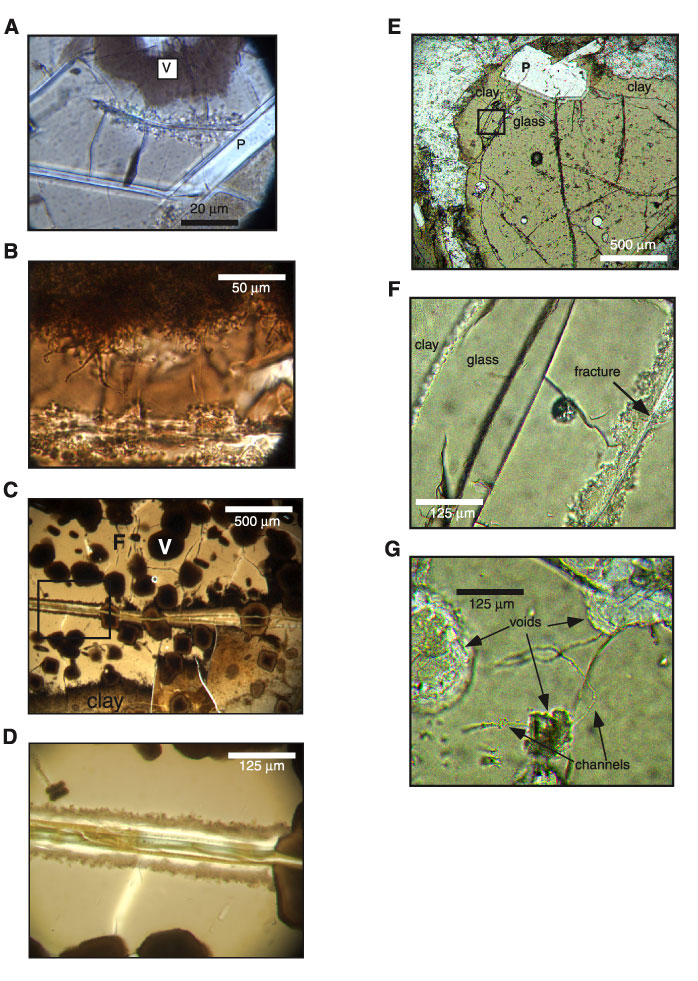Figure F87. Photomicrographs of glass from Hole 801C viewed in plane-polarized light demonstrating microbial alteration textures. A. Sample 185-801C-12R-1, 85-89 cm, pillow margin. Brown variolitic (V) and clear glass with a single white plagioclase feldspar lath (P) in the lower right. A fine (5-µm wide) fracture extends into the glass in the center of the photograph from a fracture that lies along the edge of the feldspar. This 5-µm fracture is surrounded by delicate, hollow, ornamented channels that extend 5-10 µm from the fracture. These are similar to decorations found in a variety of subseafloor volcanic glasses that have been attributed to microbial activity. B. Sample 185-801C-17R-3, 85-91 cm, flow margin. This glass has parallel fractures and one of these lies at the bottom of the photograph and a second one is just beyond the top of the photograph. Surrounding the top fracture is a dense network of channels that extend 50-100 µm from the fracture and make the glass opaque. Some individual channels can be seen extending toward the center of the photograph. Where these intersect the surface of the thin section the channel cross section is ~5 µm. The fracture across the bottom of the photograph has not developed the dense network of channels. C. Sample 185-801C-48R-2, 121-123 cm. This photograph shows variolitic glass (V) and fresh glass (F), which are cut by a 100-µm-wide fracture. Near the bottom of the photograph, fresh glass is being replaced with clay and the boundary between them is irregular, much like the dark boundary in B. The glass next to the fracture is being converted to clay along an irregular alteration front. The box shows the location of D. D. Detail of Sample 185-801C-48R-2, 121-123 cm. Brown variolitic glass is around the edges of the photograph. The fracture is ~20 µm wide and is filled with clay. The dark bands in the glass along the fracture contain irregular interconnected voids ~1 µm across. This irregular texture is not preserved as the glass-to-clay alteration front advances. E. Sample 185-801C-801C-42R-2, 126-128 cm. Hyaloclastite thin section viewed in plane-polarized light. The white in the upper left corner is calcite. The glass is tan and contains a 500-µm white plagioclase feldspar (P). The outer 100-200 µm of the glass has been altered to clay that is the nearly same color as the glass. The glass is altered to clay along fractures. The area in the square is shown in F. F. Detail of Sample 185-801C-42R-2, 126-128 cm. The edge of the glass (upper left of photo) is scalloped and the edges of the fracture are irregular. In both areas the glass is being replaced by clay. G. Detail of Sample 185-801C-42R-2, 126-128 cm. The interior of a separate piece of glass from that shown in E and F. Three voids are labeled and 2- to 4-µm-diameter tunnels lead from the voids into the glass. The tunnels are 100-200 µm long and have irregular edges from which 1-µm tunnels branch. This is the only location in Hole 801C where this type of tunnel was observed. They are also similar to a style of tunneling seen in ocean floor basalts from other ODP holes.

![]()